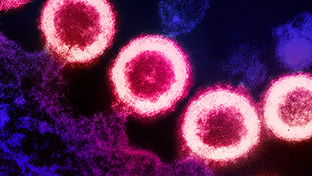Comprehending Post-Treatment Control of HIV
Which factors influence how fast the virus rebounds after treatment interruption in cure trials?
By Jeffrey Laurence, M.D

Research question
It was noted in last month’s update that, despite many clinical trials aimed at eradicating HIV or inducing its long-term suppression in the absence of antiretroviral therapy (ART), no program has achieved these goals in most participants. However, some participants were able to achieve post-treatment control, suppressing HIV—at least for a time—after ART was interrupted under medical supervision.
In a recent study published in the journal Nature Communications, researchers analyzed already completed trials to see how specific clinical or laboratory findings documented before ART interruption might help predict who is more likely to have a sustained HIV remission after ART interruption.
Findings
Twenty-four HIV cure trials involving 382 individuals that included at least five measurements of HIV load within the first 84 days post-ART interruption were examined.
Sustained suppression of HIV below 50 copies/ml—i.e., “undetectable” by standard lab measures—occurred in only 1% of participants who had started ART more than six months after their initial infection But the proportion rose to 6% in those who had initiated ART within six months of infection. The median time for all others to reach a detectable viral load was 16 days
Race and sex did not appear to influence post-treatment control, but lower CD4 counts, both at time of initial ART use and at time of beginning treatment interruption, were a significant factor.
Impact
The authors conclude that this analysis “can be informative for future [HIV cure] study designs to inform power, strategy, monitoring frequency and communication with potential study participants to enable anticipation of potential timing and magnitude of viral rebound.”
amfAR’s role
amfAR was a funder of this research. amfAR grantee Prof. John Frater, of the Nuffield Department of Medicine, University of Oxford, is one of the co-authors of the paper.
Original article
http://www.ncbi.nlm.nih.gov/pubmed/39837813
Dr. Laurence is amfAR’s senior scientific consultant.
Share This:
